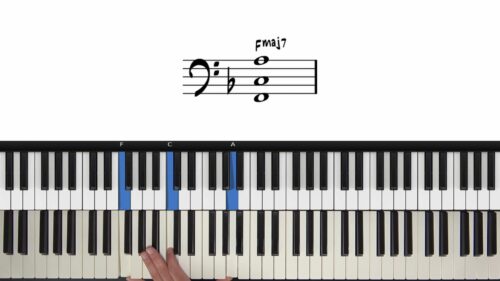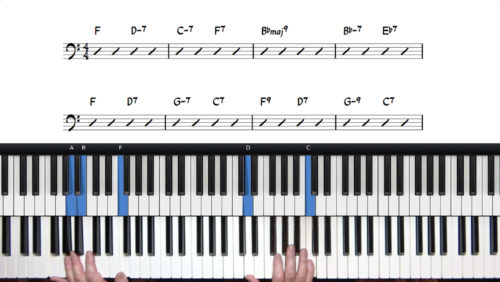Blues Ruffs & Rolls
In this lesson we introduce left hand techniques such as ruffs and rolls to enrich the sound and effectiveness of your left hand; a crucial aspect of slow blues piano playing.
The Ruff Technique
We start by exploring the ‘ruff’ technique – named for its distinctive sound, reminiscent of a dog barking – where we quickly roll the notes in our left hand. Left hand ruffs add strength and impact to our passing chords and resolutions and enhances the overall dynamics of our blues playing.
Building up finger strength and dexterity is essential for adding ruffs to our blues playing and so we demonstrate the ruff technique slowly. Additionally, you’ll learn how this technique is more effective in the lower registers of the piano, providing a richer, bass drum-like sound, enhancing the chord changes.
Blues Walkup Variations
We finish this lesson by providing a few examples of subtle left hand walk-ups. We approach each of the core chord changes (F7, Bb7, and C7) with a left hand chromatic sequence which approaches the target chord from 3 half steps below.
These more subtle left hand walkups complement the ideas and principles that we discussed in our lessons on passing chords.
Lesson Downloads
-
Left Hand Ruffs Notation File Type: pdf
Practice Tips
-
Slow down and dissect the ruff technique, focusing on the octave positioning in your left hand and the rolling of the middle notes.
-
Incorporate ruffs into the turnaround sections, giving a thicker, more resonant sound to your turnaround phrases, particularly the step-wise bass lines.
-
Work on chromatic walk-ups to the root of the next chord. Start slowly and ensure accuracy before increasing speed. This technique is especially useful for transitions between the main chord changes.
-
Remember, mastering these left-hand techniques in blues piano takes time and patience. Focus on gradual improvement and enjoy the process of learning and exploring new sounds.







